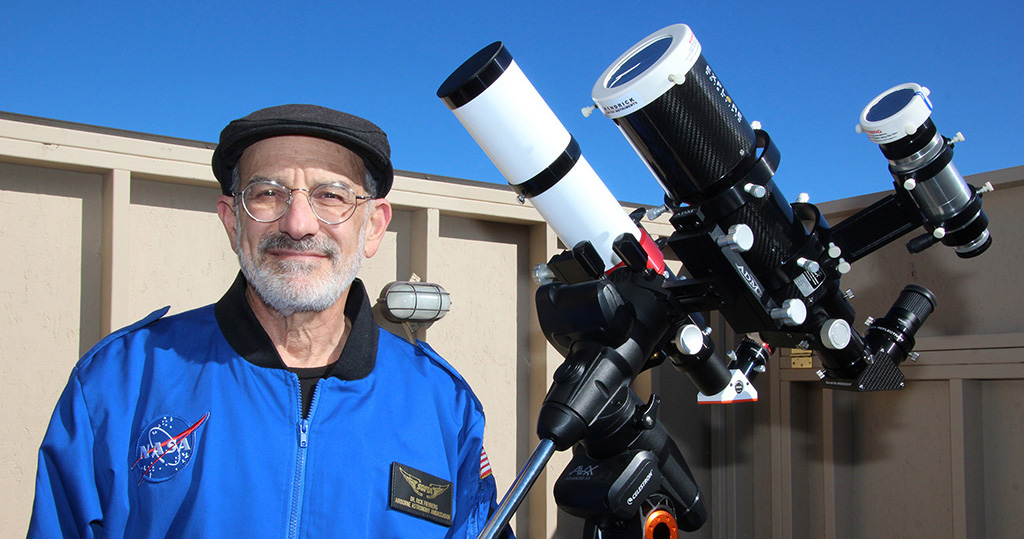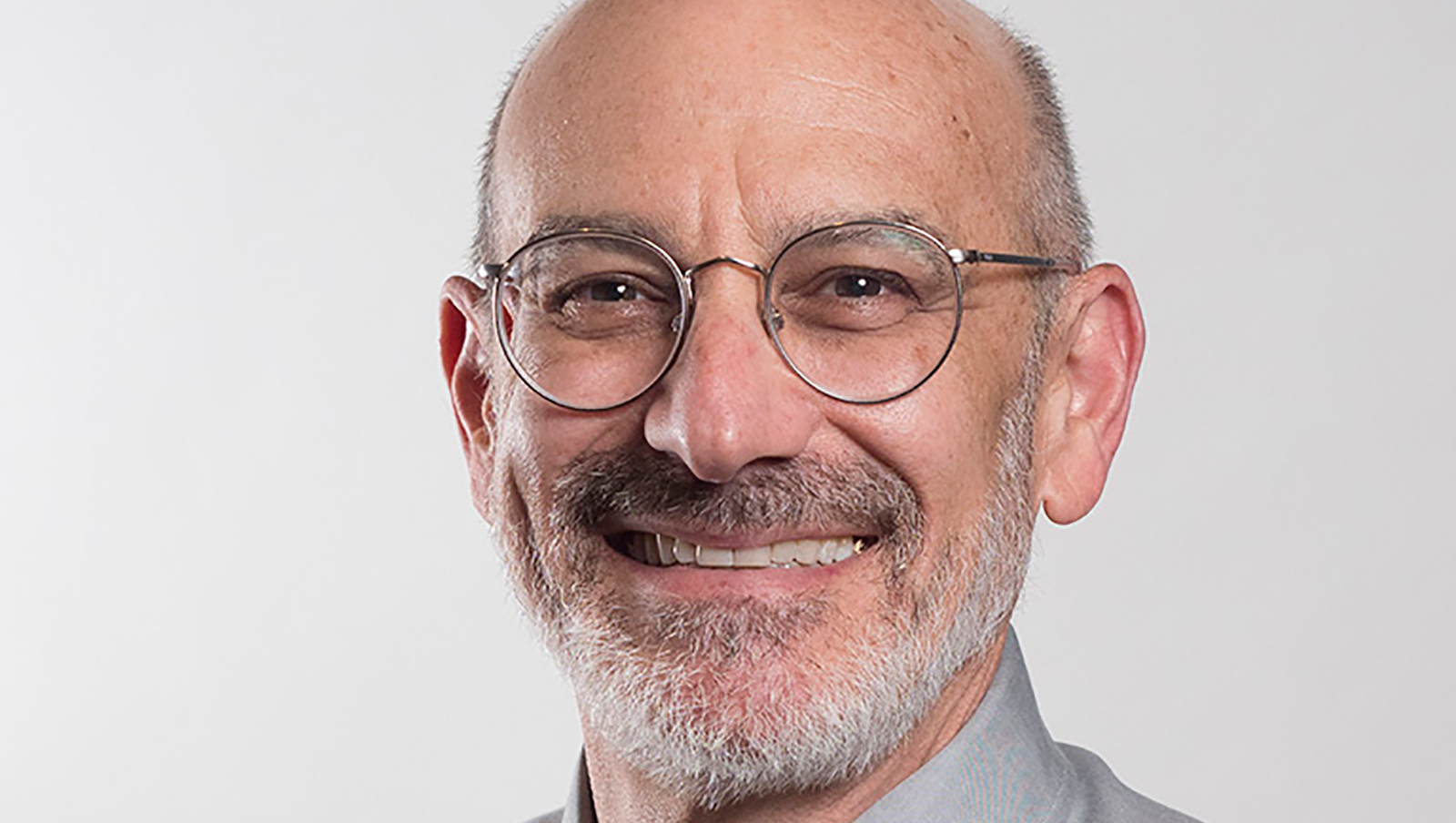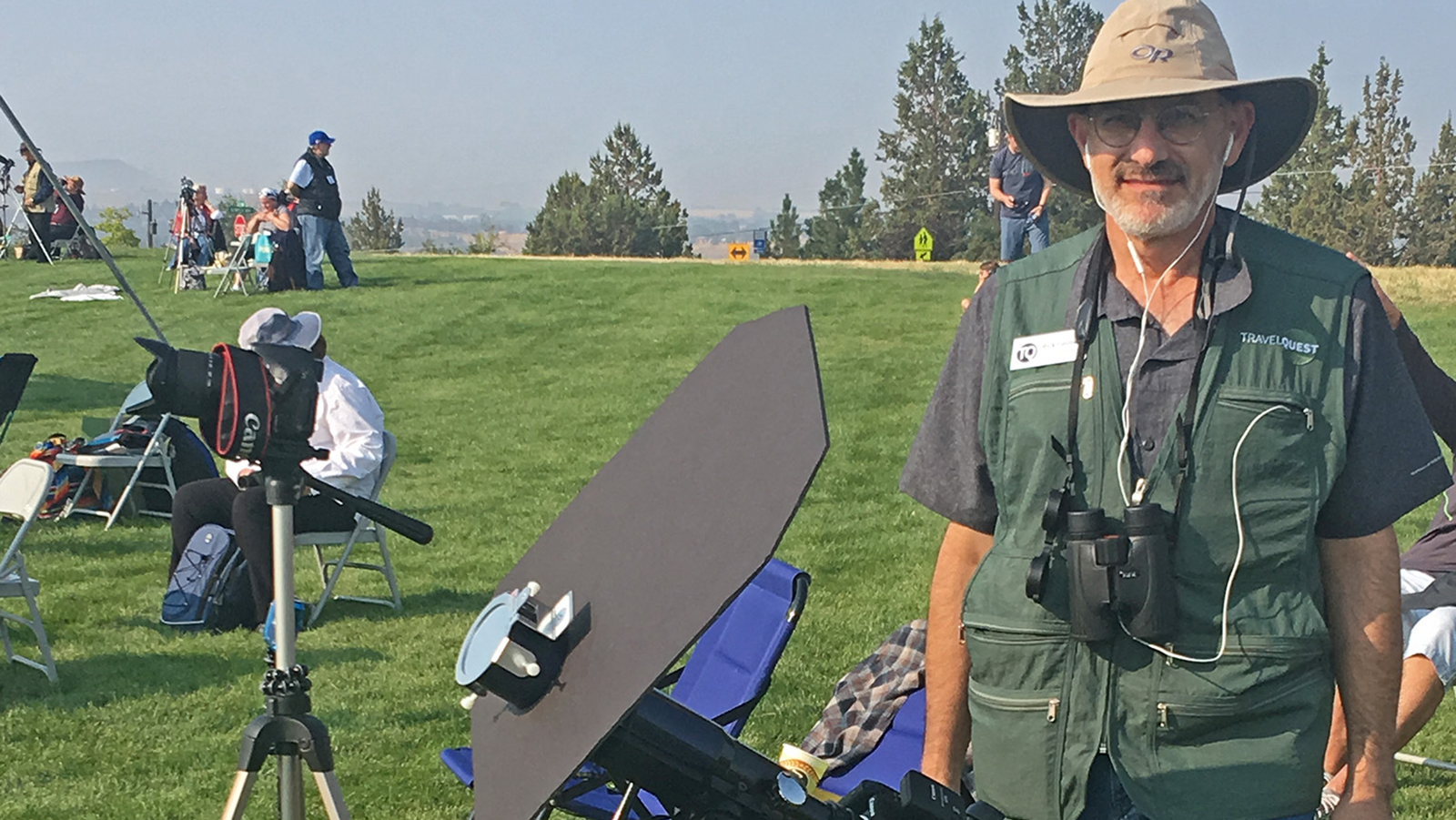
Interview: Rick Fienberg from the American Astronomical Society
For many, a total solar eclipse is a once-in-a-life time experience. But for some, the experience leads them to seek out more of these celestial happenings. Rick Fienberg, an astronomer and member of American Astronomical Society’s (AAS) 2024 solar eclipse task force, is such a person. The April 8 total solar eclipse will be his 15th.
Rick has witnessed total solar eclipses all over the world, and these experiences have shaped his perspective on our place in the cosmos. It’s also led to a passion for sharing science. Rick is the co-author of the recent edition of “Astronomy for Dummies,” a fun and accessible guide to the mysteries of the universe.
For the upcoming North American eclipse, Rick is organizing things like safety workshops through his work with the American Astronomical Society, helping people, organizations and towns prepare themselves for this April.
We recently spoke with Rick about his work. The transcript below has been edited for clarity.

Thank you for your time, Rick! Tell us a bit about yourself.
I’m trained as a professional astronomer. I earned my Ph.D. at Harvard University in the mid-eighties, but during graduate school, I discovered that I really enjoyed writing about and teaching astronomy more than I enjoyed doing research. I ended up working at “Sky & Telescope” magazine, where I spent 22 years rising up to two different senior positions as the president of the parent company and as the editor-in-chief of the magazine. When I finally tired of the monthly grind of magazine publishing, I left to spend a year teaching high school astronomy. Following that, I became the press officer for the AAS, where I stayed for 12 years. While I am now technically retired, I’m volunteering for the AAS Solar Eclipse Task Force. I have a lot of experience with solar eclipses — I’ve been to 14 total solar eclipses all over the world. I have only been clouded out twice, so I’ve seen a total solar eclipse 12 times.
What’s your favorite memory of the sun?
Total solar eclipses are, I think, the most interesting things that you can experience in connection with the sun. My first total solar eclipse, which was in Mexico in 1991, was probably my best for two reasons. First, I’d never seen one before, so everything was new, and it was so much more exciting and beautiful than I had been led to believe. And second, it was the longest eclipse I’ve seen, lasting more than 6 minutes, so it’s certainly one of my most important memories.
How did you discover your passion for science and astronomy?
For my 12th birthday in 1968, I was given a small telescope by my grandmother and uncle. I started observing the moon, planets and other celestial bodies, but also realized that to truly make sense of what I was seeing, I needed to learn more about astronomy. Soon after, at my middle school’s book fair, I found a book by Isaac Asimov called “The Universe: From Flat Earth to Quasar.” It blew my mind. That same year, NASA sent Apollo 8 to the moon. That was pretty exciting and piqued my interest like no previous space missions had. Also in 1968, the movie “2001: A Space Odyssey” came out, and that also blew my mind. So those four things combined basically meant that by the time I turned 13, I knew that I was going to go into space, if not as an astronaut, then at least as a scientist. And I never wavered.

When did communicating science become a passion for you?
It came primarily through teaching undergraduates during my time at Harvard. I realized that in order to teach something, you have to know it even better than when you first learned it. I recognized that teaching others gave me that deeper knowledge and improved my understanding even of very basic, simple astronomical principles. I also realized that how you present scientific information can really have an influence on how it’s received. This was especially true for undergraduates taking my class who were not science majors.
Over the years, my commitment to science communication has only deepened. Science literacy isn’t just knowing a bunch of science facts. It’s about understanding the process of science; why science works as well as it does, the limits of what we know and how we push those limits back as we learn new knowledge. But in connection with eclipses, the other thing that I always stress is the beauty, awe and wonder of science.
Can you tell us more about what you’re doing in your role with AAS’ Solar Eclipse Task Force?
The task force was formed a few years before the 2017 eclipse. The executive officer of the AAS, Kevin Marvel, is also an eclipse chaser (though he hasn’t seen as many as I have), and he knew from experience that one of the problems that countries encountered when they hadn’t had a solar eclipse in a while was misinformation, primarily about safety. He felt that one area where the AAS could be helpful was in promoting safety. He also felt that it was important to bring the community of eclipse stakeholders together so that they can share information and best practices. When I talk about stakeholders, I’m referring to everybody who needs to plan ahead for an influx of visitors because they’re in the path of totality. There’s a lot of different stakeholders involved when you’re basically expecting something like a Super Bowl in every major city along the path happening simultaneously. It requires a lot of planning, and we decided, well, we know all these stakeholders. We’re connected with a wide variety of people and have enough credibility as the AAS to be able to reach out to state and local governments and the park system and all that. So, the task force plays that role too.
What roles do you play specifically within the task force?
When we first started, our main goals were to promote good safety information as widely as possible and to try to get as many other organizations as possible to promote the same messages. We organized a set of workshops to bring all these stakeholders together. Very quickly, we also realized we needed a website to share information and to publicize our workshops. We had five or six workshops before the 2017 eclipse, and we will have had six before the 2024 eclipse. I’m motivated by my desire to enable as many people as possible to see the eclipse and do it safely. In 2017, I created a list of companies that we confirmed were selling safe, legitimate eclipse glasses — an important safety initiative. The reason this mattered is because there is an international standard called ISO 12312-2 specifying the transmittance properties and material properties of a safe solar viewer. After 2017, I said I’m never doing that again, it’s too much work. But NASA gave me an exceptional public achievement medal in Washington D.C for having done it. And so I can’t not do it again. They might ask for the medal back

What excites you about the 2024 eclipse, specifically?
One thing that makes eclipses unique, and why we like to see more than one, is because they happen in different places. Part of it is the excitement of going somewhere interesting. So where am I going for 2024? I’ll be leading a tour on a cruise ship off the coast of Mexico. So I’ll see nearly four and a half minutes of totality, hopefully under clear skies from the deck of a ship off the coast of Mazatlán.
Another reason that we like to go to multiple eclipses is because it is literally impossible to experience everything that a total solar eclipse has to offer at a single eclipse because of what happens on every physical scale. For example, you get sunset colors all the way around the horizon as the moon fully covers the sun, and in order to experience that, you have to look away from the sun. On the other hand, if you spend your whole time looking at the sun with your solar viewers, you’re going to see a lot more detail than people who aren’t doing that, but you’re not seeing what’s happening around you. If you plan ahead carefully and stick to your plan, you can remember to look around the horizon briefly, look for the bright stars and planets that appear as it gets dark, and then focus on taking in other aspects of the eclipse. It’s taken me 12 clear-skied totalities to be able to focus on everything because you get so dumbfounded by the spectacular beauty of it. So, more is better, and I’m excited for the 2024 eclipse.
That feeling of awe and wonder must be amazing. Is there any specific moment during the eclipse you’re looking forward to?
I’m looking forward to just seeing another total solar eclipse because it’s been almost seven years since my last one. With the sun being so close to solar maximum, when solar activity is high, we should be able to see a truly spectacular solar corona. Another thing I think about is how the sun and the moon miraculously will have chosen to align themselves perfectly with my head. It’s like, wow, they picked me! I’ll be standing in this line that’s 93 million miles long. I’m at one end and the sun is at the other. And the moon will be around a quarter of a million miles away from me at the time — in perfect alignment.
Also, even though I’ve experienced it 14 times, even when clouded out, I never fail to be astonished at how quickly darkness descends. It’s cool, no pun intended, to feel the temperature change. There’s also the thrill of the chase and the risk of getting clouded out, which heightens the anxiety around total solar eclipses. You still get cold, you still get the darkness, but you can’t help but be disappointed. It’s thrilling when you succeed and it’s terribly disappointing when you don’t. But thankfully, there’s always another eclipse in the future, right? If you can find a way to get to it.